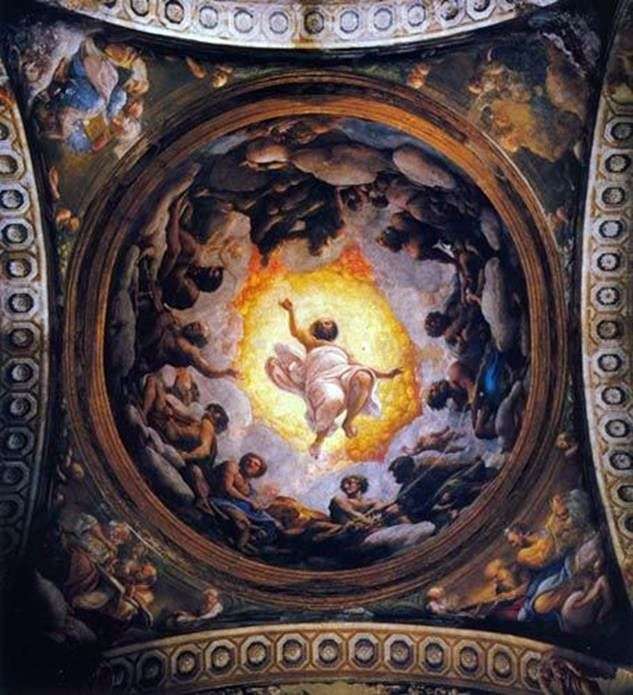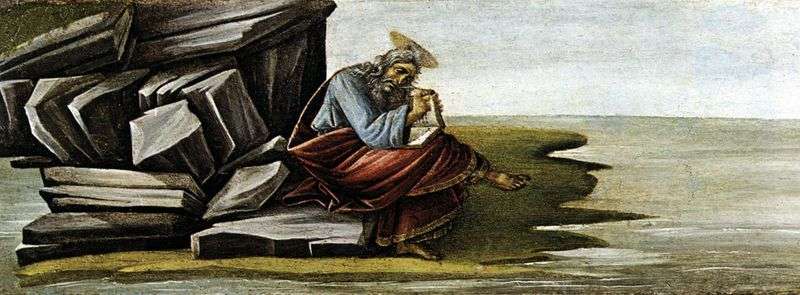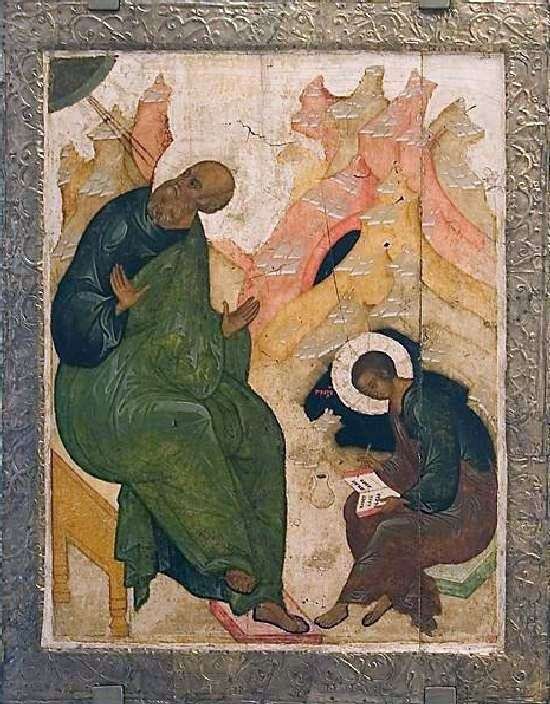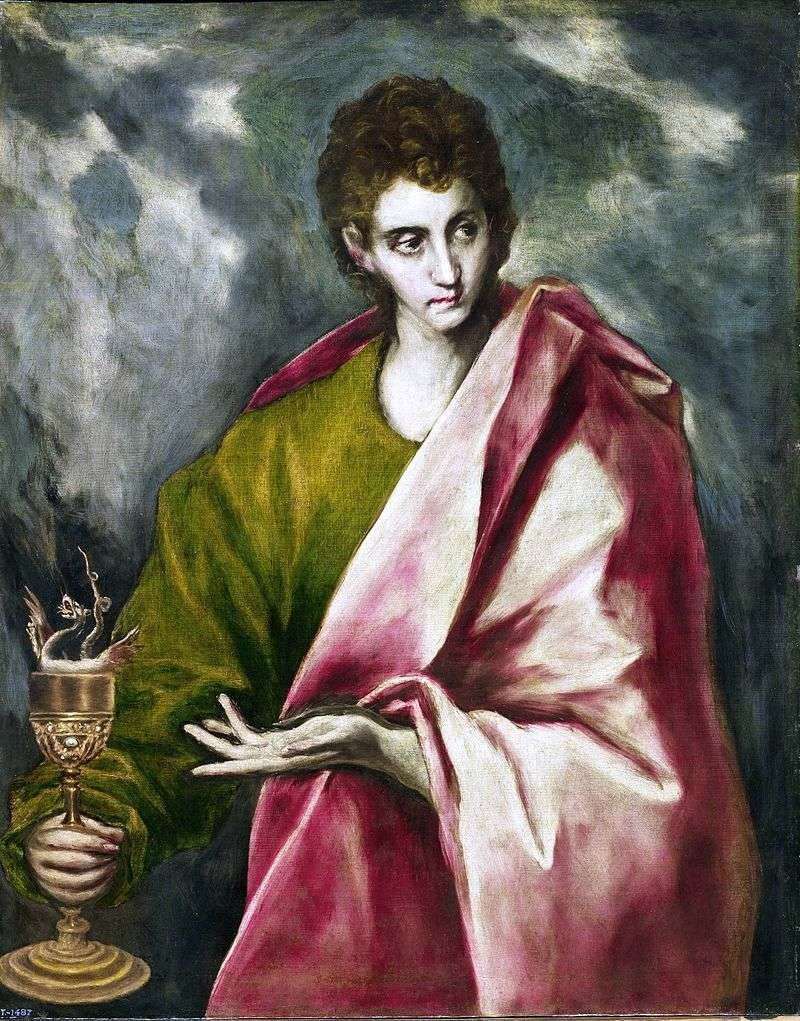
Moscow. St. John the Evangelist is an apostle and evangelist, the author of one of the four Gospels, the three epistles and the text of the Apocalypse, also called the “Revelation” of St. John the Theologian. The Holy Scriptures report on his preaching of Christianity in Asia Minor, for which the saint was exiled to the island of Patmos.
Here, in prison, he wrote the Apocalypse – a mysterious book filled with many dark places and allegories. In the composition “John the Theologian and Prokhor”, widely spread in Byzantine and Old Russian art, the moment of John’s work on the text of his works is presented. The place of action is the island of Patmos, where, listening to the Divine voice, John dictates to his disciple Prochorus the inspired words. Most often, these compositions are the output miniatures of the Gospels, preceded by the text of the Gospel of John, which allows us to view them as a picture of work on the text of the Gospel. This is also indicated by the beginning of the inscription inscribed in Prokhor’s scroll: “In the beginning there was a word…”, corresponding to the text of the first head of the Gospel of John.
In comparatively early times, similar compositions also appear on the doors of the Royal Gates, among the images of the other three evangelists. The composition “John the Theologian and Prokhor” representing nowadays an independent icon, apparently, originally was a part of the Royal gates, from which it was cut out for sale on the antique market.
Such splits from the Royal gates had wide circulation in the late XIX – early XX century, when they were literally flooded with private collections. It is possible that the Tsar’s Gate was written in Moscow and was intended for one of the local churches.
 John the Theologian in Silence
John the Theologian in Silence The Vision of John the Theologian on Patmos by Correggio (Antonio Allegri)
The Vision of John the Theologian on Patmos by Correggio (Antonio Allegri) Jean le théologien et Prokhor
Jean le théologien et Prokhor St. John the Evangelist, writing on the Pathos Book of Revelation by Sandro Botticelli
St. John the Evangelist, writing on the Pathos Book of Revelation by Sandro Botticelli Luke the Evangelist, with Saints on the Fields
Luke the Evangelist, with Saints on the Fields Juan el teólogo y prokhor
Juan el teólogo y prokhor Theophany with the Gospel Tale of the Temptation of Christ
Theophany with the Gospel Tale of the Temptation of Christ Apostle John the Evangelist by El Greco
Apostle John the Evangelist by El Greco